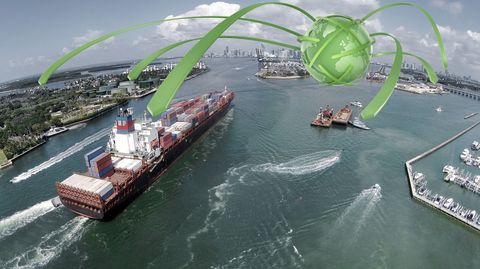In the years following the economic downturn of 2008, global trade growth struggled to regain its former momentum, with continued uncertainty and sluggish economic trends resulting in a slower recovery than many businesses had hoped for.
These mixed fortunes have been reflected numerous times in recent forecasts from international bodies such as the World Trade Organization (WTO), which has had to revise its expectations downwards over the last few years due to disappointing trade data from many parts of the world.
However, the latest economic analysis from the WTO has offered a somewhat more optimistic picture of the state of the global market, resulting in a strong upward revision to their forecast for 2017 trade expansion on the back of better-than-expected results for the first half of the year. Although conditions remain precarious, it will be hoped that this could a sign of better times to come for beleaguered businesses worldwide.
An improved forecast
In the September report, the WTO forecast that world merchandise trade volumes will grow by 3.6 per cent in 2017, within a range from 3.2 per cent to 3.9 per cent. This represents a significant rise from the 2.4 per cent growth forecast made back in April, suggesting that the year's figures will come in at the high end of the predicted range of 1.8 per cent to 3.6 per cent.
This would signify a major improvement from the lacklustre 1.3 per cent increase seen in 2016, with the ratio of trade to GDP growth also expected to rise to 1.3 in 2017. Trade expansion is then expected to moderate slightly to 3.2 per cent in 2018, although this estimate falls within a broad range from 1.4 per cent to 4.4 per cent, indicating the current level of economic and political uncertainty that continues to prevail.
Supporting factors
The WTO has raised its forecasts on the basis of a sharp acceleration of international trade growth in the first six months of 2017, supported by enhanced GDP performance across most major economies in the second quarter, most notably China, the US and the eurozone.
The upturns in China and the US had a particularly positive impact on demand for imports, while the partial recovery of oil prices this year has helped to fuel American investment. Meanwhile, strengthening export order numbers offer an indication that the trade momentum seen during the first half of the year is likely to be maintained for the rest of 2017.
Also of note is the fact that the consensus forecast for world GDP growth has seen a modest improvement, with a 2.8 per cent rise expected in 2017, compared to the 2.3 per cent uptick seen in 2016. Naturally, better economic conditions are likely to lead to positive outcomes for traders.
Can momentum be maintained?
The WTO has welcomed the improved trade forecasts, but has also offered a warning that numerous factors still hold the potential to negate these signs of recovery.
Roberto Azevedo, director general of the WTO, said: "The improved outlook for trade is welcome news, but substantial risks that threaten the world economy remain in place and could easily undermine any trade recovery These risks include the possibility that protectionist rhetoric translates into trade restrictive actions, a worrying rise in global geopolitical tensions and a rising economic toll from natural disasters.
"Though difficult to quantify, these risks are very real. As a result, increased optimism about trade should be tempered with a healthy dose of caution."
These factors - in addition to an expected tightening of monetary policy in a number of key territories - are why the rapid pace of growth predicted for 2017 is not expected to persist in 2018. However, Mr Azevedo suggested that other longer-term trends could help to fuel sustainable expansion, including the fact that trade growth is now more synchronized across regions than it has been for a number of years.
He added that this is most likely to be achieved if countries are able to resist the temptation to pursue protectionist policies and instead work together towards a shared model of multilateral, globalized trade that seeks to distribute potential gains as widely and as fairly as possible.






